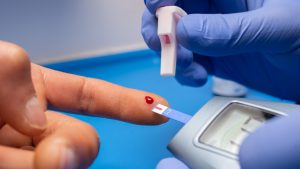The New Year symbolizes fresh beginnings—a perfect time to reassess your health journey and set goals for managing diabetes more effectively. Creating realistic, meaningful goals empowers you to thrive while living with diabetes. Here’s how to approach the New Year with confidence and purpose.
1. Reflect on the Past Year
Start by looking back on your diabetes management journey over the past year. What worked well? Where did you face challenges? Reflection provides valuable insights to guide your future goals.
2. Set SMART Goals
Create goals that are Specific, Measurable, Achievable, Relevant, and Time-bound. For example:
- “Walk for 30 minutes, 5 days a week.”
- “Prepare balanced, home-cooked meals three times a week.”
SMART goals give you a clear focus and a way to track progress.
3. Prioritize Blood Sugar Management
Maintaining stable blood sugar levels is a cornerstone of diabetes management. Set goals around regular monitoring, such as:
- Checking your blood sugar at specific times daily.
- Using a journal or app to track patterns and share with your healthcare team.
4. Commit to a Balanced Diet
Make nutrition a priority by:
- Incorporating more whole, plant-based foods like vegetables, legumes, and whole grains.
- Reducing processed foods and sugary snacks.
- Experimenting with new healthy recipes to keep meals exciting.
5. Make Physical Activity a Habit
Regular exercise improves insulin sensitivity, energy levels, and mood. Choose activities you enjoy, such as walking, swimming, or yoga, and aim for at least 150 minutes of moderate activity per week.
6. Focus on Stress Management
Chronic stress can impact blood sugar levels. Prioritize mental health by practicing mindfulness, engaging in hobbies, or seeking support from friends, family, or a therapist.
7. Schedule Health Check-Ups
Start the year by booking appointments with your healthcare team. Regular check-ups help monitor your A1C, blood pressure, and cholesterol, ensuring your health stays on track.
8. Get Creative with Meal Planning
Meal planning can simplify your routine while ensuring balanced nutrition. Dedicate time each week to plan meals and snacks that fit your goals and avoid last-minute unhealthy choices.
9. Build a Support System
Lean on your community for encouragement and accountability. Whether it’s a support group, a diabetes educator, or loved ones, having a support system makes the journey easier and more enjoyable.
10. Celebrate Small Wins
Every step forward is a victory. Celebrate progress, no matter how small. It’s these small achievements that build momentum and lead to lasting change.
Make 2024 Your Healthiest Year Yet
As you prepare for the New Year, remember that managing diabetes is a journey, not a sprint. By setting intentional goals, seeking support, and embracing a positive mindset, you can make this year your healthiest and happiest yet.
Here’s to fresh starts and vibrant health! From all of us at E4 Diabetes Solutions, we’re here to support you every step of the way.

Type 2 Diabetes: Is It Really Reversible?
A recent National Geographic article [link] explores how type 2 diabetes could be reversible with the right approaches. This condition, which affects millions of people worldwide, has long been considered a chronic and progressive disease. However, recent research challenges this perception and suggests that with lifestyle changes and the right approach, remission is possible. The

How Do GLP-1 Drugs Compare? A Breakdown of Ozempic, Mounjaro, and Trulicity
GLP-1 receptor agonists have revolutionized diabetes management, with drugs like Ozempic, Mounjaro, and Trulicity leading the market. But how do these medications compare in terms of effectiveness, side effects, and patient outcomes? Let’s explore their differences and what they mean for diabetes patients. Understanding GLP-1 Medications GLP-1 receptor agonists mimic a natural hormone that helps

Why Has Medicare Spending on Diabetes Medications Skyrocketed in 5 Years?
In the past five years, Medicare spending on diabetes medications has increased nearly fivefold, reaching $35.8 billion in 2023. This surge has been primarily driven by the growing use of GLP-1 drugs such as Ozempic, Mounjaro, and Trulicity. But what is behind this cost escalation, and how does it affect patients and the U.S. healthcare

The Gut Microbiota and Blood Sugar Control: A Hidden Connection
The human gut is home to trillions of bacteria that play a crucial role in digestion, immune function, and even metabolism. Recent research has revealed a fascinating link between the gut microbiota and blood sugar regulation, shedding light on how the balance of microbes in our intestines can influence diabetes risk and overall metabolic health.

The Dawn Phenomenon: Why Blood Sugar Rises While You Sleep
For many people with diabetes, waking up with high blood sugar levels can be frustrating—especially if they didn’t eat anything overnight. This early-morning spike in blood glucose is known as the Dawn Phenomenon, and it happens due to natural hormonal changes in the body. But why does it occur, and how can it be managed?

The Influence of Red Light on Blood: Can It Improve Diabetes?
Type 2 diabetes is a metabolic disease characterized by insulin resistance and elevated blood glucose levels. In the search for complementary alternatives to improve glycemic control, red light therapy has gained attention due to its potential to enhance circulation, reduce inflammation, and optimize cellular function. But what does science say about it? ✨ What is

